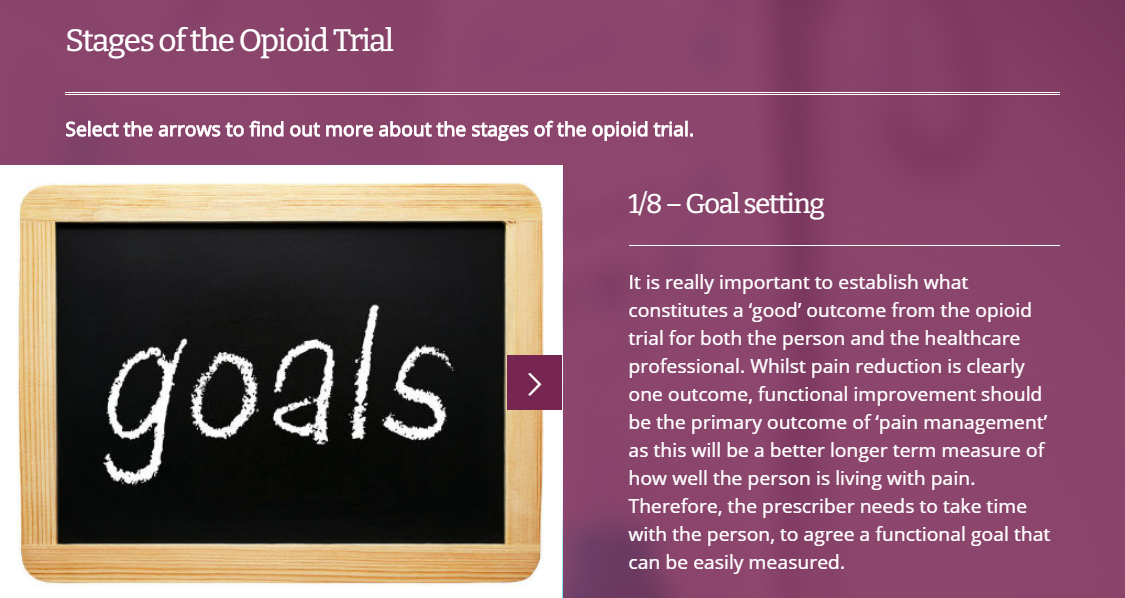Here, we learn all about the ‘opioid epidemic’ and how e-Learning for Healthcare’s e-PAIN programme is helping NHS staff to overcome it
There has been much written in the press about an ‘epidemic’ of prescription opioid drugs causing huge problems in the U.S. and a warning that there may be a similar problem in the UK. Opioid drugs are very powerful painkillers based on opium poppies or synthetic derivatives that work in the same way. How has this been allowed to happen, and how can the NHS respond?
Historically, opioid medication was freely available over-the-counter (OTC) in most pharmacies without regulation. Any adult could purchase laudanum, a powerful opium derivative (1% morphine in 10% alcohol) without a prescription. Legislation was largely driven by the social problems of laudanum and opium addiction. The death of Lizzie Siddall in 1862, a Victorian ‘supermodel’ of the artistic Pre-Raphaelite School, who appears in Rossetti’s painting ‘Ophelia’, helped start a public backlash against the sale of OTC opium. In 1906, the Pharmacy Act limited the strength of opium products to less than 1%. In 1920, the Dangerous Drugs Act restricted the prescription of opioid mediations to doctors only but left codeine, a weak opioid, as the only available OTC opioid.
After a long hiatus, and to improve the lives of people terminally ill from cancer, the new speciality of palliative care helped re-introduce morphine in liquid form, Oramorph, (again, 1% morphine in 10% alcohol). Oramorph is used for pain relief in cancer, combined with a slow-release tablet form of morphine lasting 12 hours that can be taken twice a day as background strong pain relief. This and similar drugs were highly successful in the late 1980s for cancer-related pain in terminal illness; helping people achieve pain relief and dignified death. Addiction is seldom a problem in terminal illness, and tolerance (the body becoming used to the drug), was not a particular problem. A set of ‘rules’, largely empirical, around the safe use of these powerful narcotics was developed alongside educational programmes for doctors. Such was their success that a decade later in the U.S., these drugs were licensed for chronic or persisting benign pain conditions. Novel opioid preparations like Oxycodone were licensed for use and guidelines developed by the American Pain Society. The new drugs were heavily promoted for use by pharmaceutical companies, and it was thought that the palliative care guidance could be extrapolated to chronic pain.
What happened, and why is this relevant now to e-learning in the UK?
Chronic or persisting pain affects 10-20% of the population, which potentially represents a huge market for pharmaceutical companies manufacturing opioids. In the early 2000s, the UK also licensed strong opioids for use in pain where people are not dying of cancer, and clinical guidelines for their use in the UK were developed. The pendulum had swung the other way – opioids could now be used for conditions such as arthritis, which are life-impacting, though not life-limiting, where their use had previously been banned.
Is opioid use always problem-free?
No. It is well known in relation to headaches that too many opioids, particularly codeine-based ones, can paradoxically cause headaches if taken regularly, often worsening the overall condition. The cure is to wean people off the opioids.
The impact of escalating doses to gain pain relief means that the dose often increased dramatically over time resulting in groups of patients who are essentially dependent on the opioids and experience withdrawal symptoms on reducing the dose.
The speciality of addiction medicine addresses the devastating effects of opioid addiction, often to heroin, which is a leading cause of death via accidental overdoses. More importantly, when using regular substitution medicines like methadone to help heroin addicts stabilise their drug use, it had been noticed that they tended to develop an increased sensitivity to pain (opioid hyperalgesia). This also occurs with ongoing use for persisting pain.
After the general licensing of opioids for non-cancer pain, the science behind opioid hyperalgesia became better understood. These drugs cause and cure pain simultaneously, but the higher the dose and the longer the administration period, the more these problems become apparent. To complicate matters, rapidly withdrawing people from strong morphine causes pain from opioid withdrawal, making it harder to discontinue the drugs.
In the U.S., large numbers of people have become addicted to prescription painkillers, and deaths from opioid overdosage have significantly increased. Guidance for health professionals has had to change to take these new circumstances into account. Successful litigation by individuals with prescription drug addiction and families who have lost loved ones have resulted in a major pharmaceutical company manufacturing opioid drugs and the American Pain Society (APS) going into bankruptcy.
So where does e-learning in the UK come in?
To provide better guidance, the Faculty of Pain Medicine in the UK along with Public Health England (PHE), produced guidance called ‘Opioids Aware’ for both patients and professionals regarding the safe use of opioids.
e-PAIN, the national e-learning programme available for all frontline NHS staff involved with pain relief, has recently re-written its sessions on opioid prescribing under the guidance of Emma Davies, a specialist pain pharmacist, who has researched the increase in prescription opioids in Wales. These sessions are based on the Faculty of Pain Medicine and PHE guidance, which recommends limiting doses and avoiding prescribing them for common pain conditions where they are known to worsen outcomes (e.g. headaches, spinal pain and chronic widespread pain or fibromyalgia). The re-vamped sessions include information on opioid addiction, and how best to use opioid drugs where they are most effective (i.e. for acute pain from surgery or trauma, and in palliative care for terminal illness). We hope this will help turn the tide of opioid prescribing and ensure that these powerful medicines are used where they are most effective and least likely to cause harm. They will also help primary care physicians advise patients on the current guidelines regarding this medication.
The Health Education England e-Learning for Healthcare e-Pain programme comprises 12 modules including a module called “Cancer pain” and one called “Treatments and therapies” which includes sessions on opioids – basic principles and for persistent pain.
For more information about the e-Pain programme visit: https://www.e-lfh.org.uk/programmes/pain-management/
Please note: This is a commercial profile












